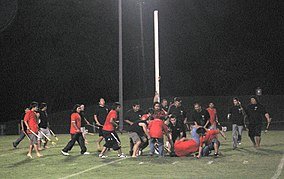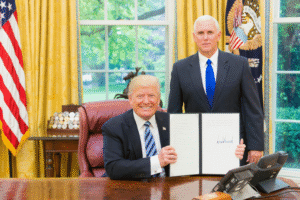
Indigenous North American stickball is a traditional sport played by many Native American tribes throughout the United States and Canada. It is a fast-paced, physical game that combines elements of lacrosse and rugby, and is often played as a way of honoring tribal traditions and customs.
Stickball has a long history among many Native American tribes, with some versions of the game dating back hundreds or even thousands of years. The rules of the game can vary from tribe to tribe, but typically involve two teams of players using long sticks to pass a ball back and forth and try to score points by throwing the ball through a goal.
One of the defining features of stickball is its physicality. Players often wear minimal protective gear and are allowed to use their sticks to check, block, and tackle opponents in order to gain possession of the ball. This can make for a rough and intense game, but also adds to the excitement and spectacle of stickball matches.
Stickball is also a deeply spiritual and cultural practice for many Native American tribes. The game is often accompanied by ceremonial rituals, songs, and dances, and is seen as a way of connecting with ancestral traditions and honoring the natural world.
Despite its importance in many indigenous cultures, stickball is relatively unknown outside of Native American communities. However, efforts are being made to raise awareness of the sport and promote its inclusion in mainstream sports culture.
In recent years, stickball has gained more visibility through events such as the World Series of Stickball, a tournament that brings together teams from across the United States and Canada to compete for a national championship.
The World Series of Stickball is just one example of how stickball is being embraced by a wider audience, and there is hope that the sport will continue to grow in popularity and recognition.
One of the key challenges facing stickball today is the need for greater resources and support. Many Native American communities lack the funding and facilities needed to fully develop and promote the sport, and more needs to be done to address these disparities.
Despite these challenges, stickball remains a vital and vibrant part of indigenous North American culture, and is sure to continue to be an important tradition for generations to come.
In addition to its cultural and spiritual significance, stickball is also a powerful symbol of resilience and perseverance. Despite centuries of colonization and oppression, Native American tribes have managed to preserve their cultural traditions, including stickball, and continue to thrive and grow as a people.
In conclusion, indigenous North American stickball is a rich and fascinating sport with deep cultural roots and a powerful message of resilience and strength. As awareness of the sport continues to grow, there is hope that it will receive the recognition and support it deserves, and that more people will come to appreciate the beauty and complexity of this ancient game.











